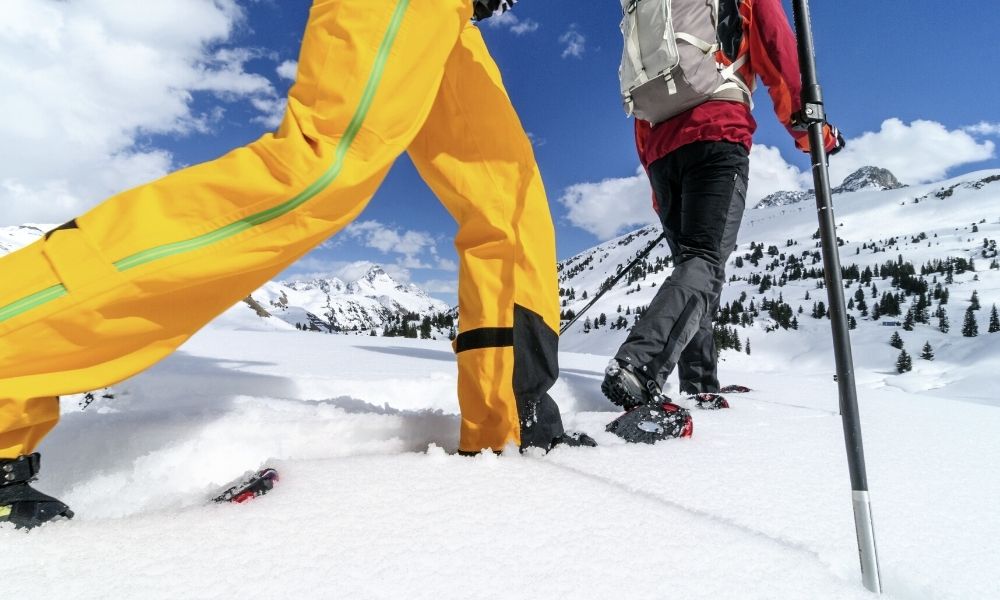Before heading out to go snowshoeing, always check the local forecast to see what the conditions will be. Unlike other sporting events, when you’re heading out to go snowshoeing, it’s also a good idea to check the forecast of the surrounding areas. Because you will be trekking a great distance, this will ensure that you’ll have the proper information to help you prepare for the trip ahead. This article will provide you the means on how to stay warm while snowshoeing in the winter every time you go out.
Dress Appropriately
Dressing for the occasion is primary to any winter sport or activity. Knowing how to dress and what to wear could save your life. Before going out, make sure you’re layering properly to help yourself regulate and maintain body heat. Three layers of clothing are needed in order to survive: the base, middle, and outer layer.
The Three Layers
The base layer will need to be something synthetic or wool in order to create and maintain your body heat. If you need a good base layer, check out some thermals for men. Many people use long johns as their base layer. The middle layer is mainly for insulation and regulation of body heat. It’ll trap the heat and keep it from leaving your body. For the middle layer, you’ll want something light, such as a fleece or a light jacket.
The outer layer should consist of an all-weather shell that prevents the elements from coming in and the heat of your body from leaving. This layer functions as a guard from the cold air, wind, and water—all of which could cause your regulation to fluctuate and eventually leave your body.
Gear Necessary for Snowshoeing
The most obvious thing to have would have to be snowshoes, but you can just as easily go with hiking boots. Investing in micro-spikes might be something to consider so that you can grapple with the snow as you make those longer hikes. Crampons will fit over your boots and shoes and prevent the elements from getting in, so getting them is necessary.
Other accessory items such as warm gloves and a hat will serve you well when you’re insulating your body heat. In the event of an emergency, having something such as a bivvy—which is like a smaller thermal sleeping bag—can be helpful while you think of a way out of your predicament. Most importantly, get to know your route well before taking off. Take your time and really study the trip and double-check everything.
It’s also good to remember that the body loses heat through radiation, conduction, convection, and evaporation. Knowing that you are constantly sweating will be helpful in knowing how to survive a trip like this. Having knowledge on how to stay warm while snowshoeing in the winter is a skill that everyone should practice in order to know how to rough the elements.



















































